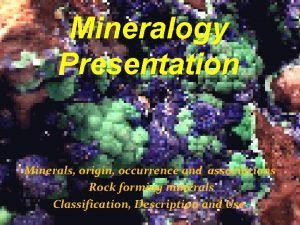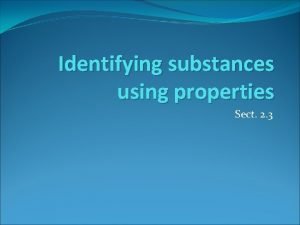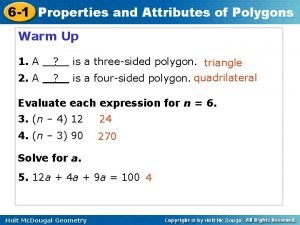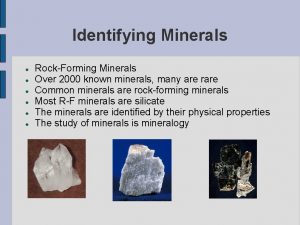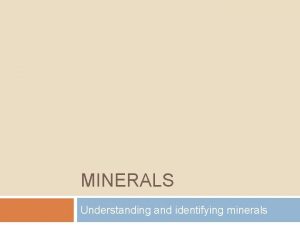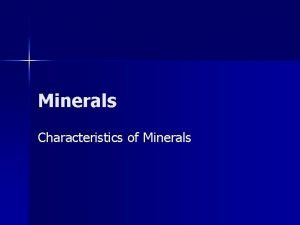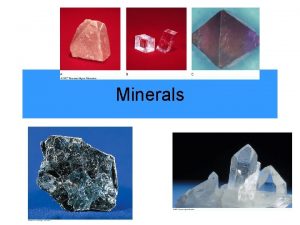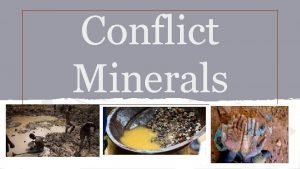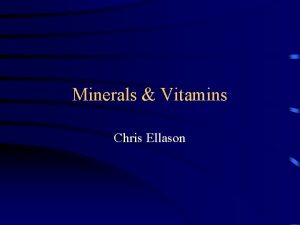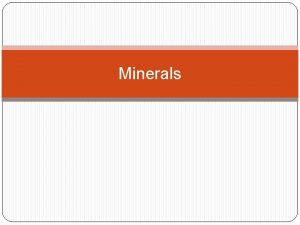1 2 Identifying Minerals 1 Classify Minerals using









- Slides: 9

1 -2 Identifying Minerals 1. Classify Minerals using common mineral identification techniques. 2. Explain special properties of minerals.

Color • Color is not the best factor to use in identifying a mineral. • Impurities and weathering cause minerals to come in different colors.

Luster – The way lights reflects off a mineral’s surface. • Metallic – shiny like metal • Sub-metallic – shiny but not smooth looking. • Non-metallic – vitreous, silky, resinous, waxy, pearly, and earthy.

Streak – the color of a mineral in powdered form. • Rub a mineral against an unglazed porcelain tile (streak plate) • Streak color is a more reliable way to use color in identifying a mineral in some cases.

Cleavage Vs Fracture • Cleavage is the tendency for some minerals to break along flat surfaces. • Fracture is the tendency for some minerals to break unevenly along curved or irregular surfaces.


Hardness – a mineral’s resistance to being scratched. • Use Moh’s hardness scale where 1 is softest and 10 is hardest.

Density – The measure of how much matter there is in a given amount of space. • D = m/v • Water is 1 g/cm 3 • Specific gravity – the ratio of a mineral’s density to water’s • Gold is 19

Special Properties • Fluorescence – minerals glow under a black light. • Chemical Reaction – reacts with acid • Optical properties – when looking through a mineral the appearance changes • Taste – mineral has a distinctive taste. • Magnetism – mineral will attract iron objects. • Radioactivity – minerals that contain uranium or radium can be detected with a Geiger counter
 Identifying and non identifying adjective clauses
Identifying and non identifying adjective clauses Identifying and non identifying adjective clauses
Identifying and non identifying adjective clauses Identifying and non identifying adjective clauses
Identifying and non identifying adjective clauses Classification of minerals
Classification of minerals Identifying substances using properties
Identifying substances using properties Use case id
Use case id Attributes of polygons
Attributes of polygons Find the value of r in polygon jklm
Find the value of r in polygon jklm Using system.collections
Using system.collections Accumulator ac
Accumulator ac



